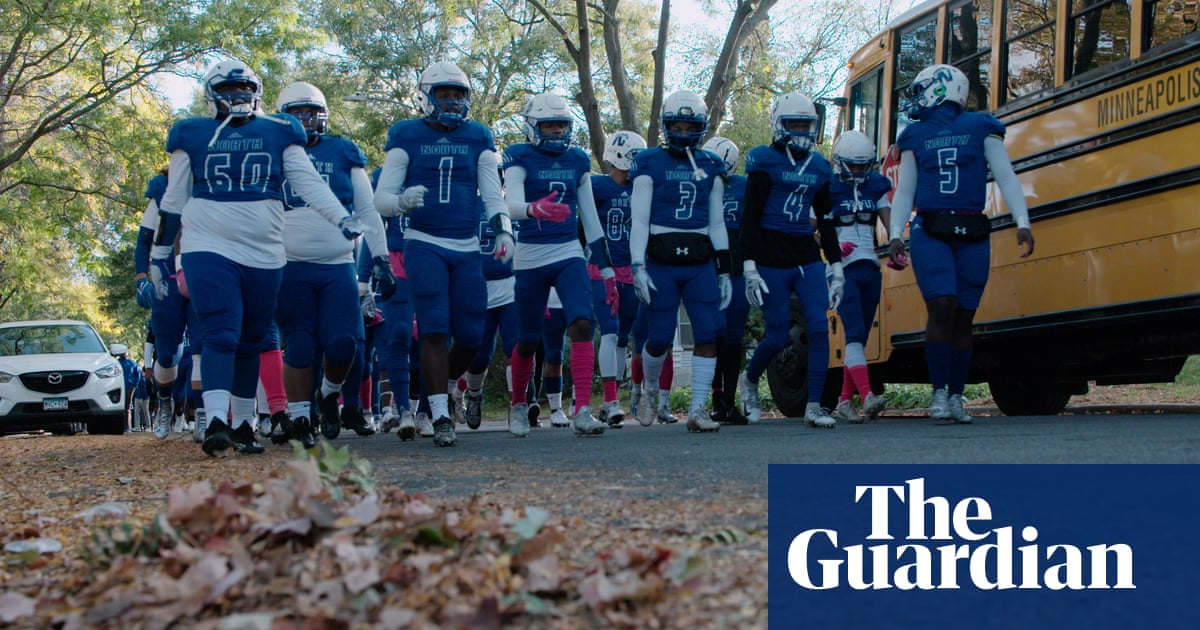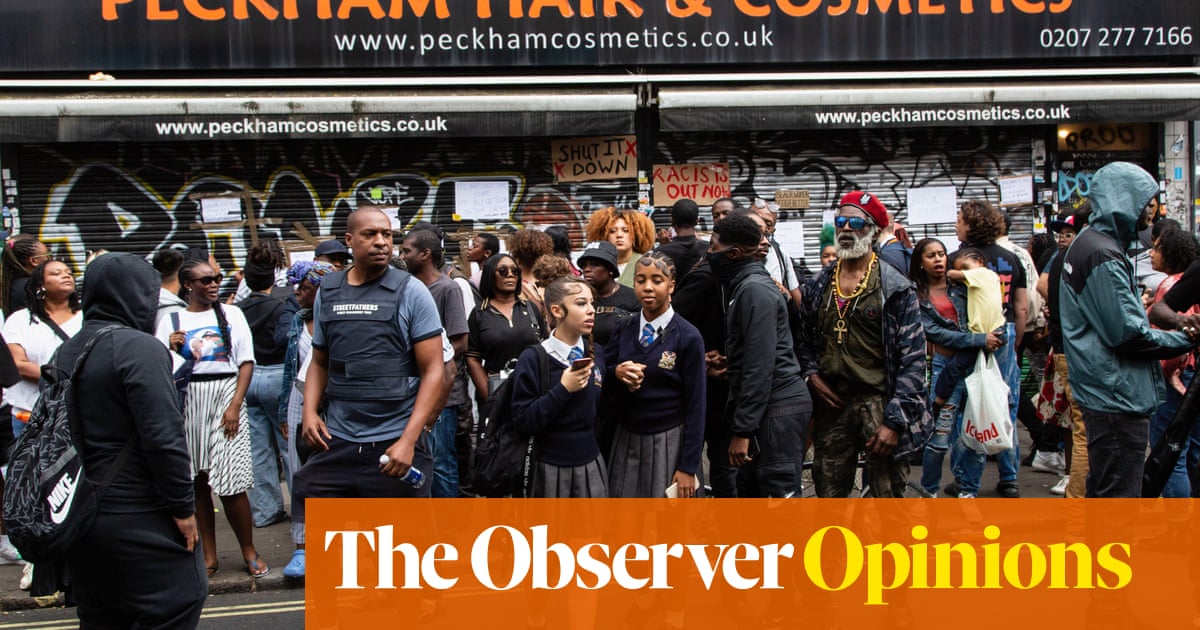
When George Floyd was unlawfully killed by a Minneapolis police officer in May 2020, the moment hit home with Peter Berg. Before the 58-year-old New Yorker turned Angeleno was a distinguished film-maker, Berg was a theater major at Macalester College in St Paul, Minnesota. He had long had fond memories of that late-80s heyday – back when the Twin Cities were famous for compassion, low crime rates and artistic revolution.
It was a special time. “Purple Rain had just come out,” Berg recalls. “There was a famous nightclub in Minneapolis called First Avenue. We would go there twice a week and see Prince, the Time or Alexander O’Neal. There was this diverse musical phenomenon happening when I was there, and my memories are of people getting along really well – Black, white, Hispanic, Vietnamese. It was very disorienting to see George Floyd brutally killed in a place I remember so differently.”
Keen to understand why and how the Twin Cities community changed, Berg found himself looking for answers in sports, a comfort zone he’s made his own like few in Hollywood – turning high school football bestseller Friday Night Lights into a mammoth on-screen franchise, producing and acting in the HBO dramedy Ballers and launching ESPN’s 30 for 30 docuseries with a look back on the NHL trade that sent hockey great Wayne Gretzky to Los Angeles. When Berg read a New York Times article about a Minneapolis high school set in the shadow where Floyd was killed that had a football team coached by cops, he knew that was where he had to be. “I sensed that there was something unique and special going on in the community.”
Under his Film 45 production company label, he marshaled a film crew to spend the 2021 season embedding at Minneapolis North. Unsurprisingly, the school community – with its hard scars from neighborhood and police violence – was suspicious of the cameras at first. Bit by bit, Berg & crew had to win them over. “We spoke to Black and white police officers coaching at the high school, spoke to the families, spoke to the kids and said, ‘Look, our goal was to go in there and observe what is happening and try and create a little bit of separation from the binary opinions that are surrounding these issues.’ We have no idea how it’s going to end.’”
The result is Boys in Blue, a four-part series that debuts this week on Showtime in the US. And at first glance, it’s tough not to miss the visual and tonal echoes to Netflix’s Last Chance U. But where that docuseries homes in on the fallen football stars seeking redemption in junior college and the week-to-week prospects of their team, Boys in Blue’s focus is much broader. It not only places those personal stories within the context of a crime-addled city at the center of the defund movement, the individual characters are vastly more textured.
The players are virtually babies, the core contributors just high school sophomores – forced to grow up too fast; the most tender moments are the ones when they can just be kids. The coaches wear two uniforms, and the professional one makes some kids fundamentally uncomfortable. While the Twin Cities’ liberal white protesters grapple with police in the streets and call for their abolition, Minneapolis North players fret for their coaches’ safety and job security on the sideline. If a ballot measure that proposes to replace the police with a more nuanced public safety department passes, Minneapolis North’s coaches would be forced to find new jobs that might not offer the same flexibility for football.
Anchoring the series is the relationship between offensive coordinator Rick Plunkett and quarterback Deshaun Hill Jr – one, a Minneapolis beat cop; the other, an incredibly police-dubious 15-year-old who’s lost loved ones to violence of all stripes. It’s a layer of complexity beyond the typical play designer-triggerman dynamic, and it makes their journey to develop trust in each other that much more compelling. But once Hill discovers that Adams isn’t that much different from him, a neighborhood kid who went into policing to actually serve and protect, Hill comes around. And once they’re on the same page, Minneapolis North rounds into a scoring juggernaut with a real chance at playing in a state championship in the home stadium of the NFL’s Minnesota Vikings before college scouts.
Certainly, football isn’t without its problems, too. The life-threatening injury to the Buffalo Bills safety Damar Hamlin was the starkest reminder yet of the game’s unavoidable physical and psychic dangers. But Boys in Blue shows why the game is too important to let go. It isn’t just a way out for these boys – a ticket to college, at least. It’s a passion, a refuge, the impetus for a disparate array of otherwise wary strangers to become family. “Football seems to me to be one of the few remaining constants that people are able to unify over,” says Berg. “You’ve got 22 men on a field at the same time, all having to operate with real coordination to achieve something that hopefully touches perfection in an environment where there’s brutal physicality, grace, athleticism, poise, grit, resilience. It’s one of the great organizing principles, culturally, in our country.”
Boys in Blue could easily have tipped into Dick Wolf-grade copaganda. But by maintaining focus on the complete story and withholding judgment all the while, Berg paints the fullest picture of the defund debate yet‚ one that makes it nearly impossible not to have empathy for all sides – even the white assistant coach who grudgingly winds up at the center of his viral video moment with a Black bus rider. “It’s certainly not our goal to tell people what to think,” Berg says. “I don’t believe there are sides in this particular story. There is just what there is.”
But the biggest gut punch comes in episode 4, when Hill is killed by random gunfire while leaving school on an icy February day. The documentary was in the midst of its final shooting week. The night before Berg’s crew had filmed him out on a date with his girlfriend, dreaming about their futures, debating whether to kiss on camera. His teammates and coaches knew it was Hill the moment they saw a shot of the walking boot on his left foot, the byproduct of late-season injury.
The man charged with Hill’s killing – ruled second-degree murder – is expected to go on trial this month. “It obviously traumatized us involved in making the show and re-traumatized people in the community,” says Berg, choking up. “George Floyd was the inciting incident for us coming down there. And then here we are, nine months later, having a memorial for Deshaun in the same auditorium where George Floyd’s memorial was.
“I’ve made scripted films about Navy Seals, police officers and rig workers who have died. I’ve met with their families and gone through the process of trying to respectfully tell their stories. But I’ve never been through anything like this.”
Hill was such a loss – a reticently sweet soul, an honor roll student and NFL aspirant who was just starting to draw recruiting attention from major colleges. Without him, Berg wrestled with how to complete the series. Ultimately, he wound up screening rough cuts for members of the Minnesota North community before delivering a final product to Showtime. It’s an ending Berg never could have imagined – harsh and yet deeply poignant. “There’s no playbook for processing the grief that comes when a 15-year-old boy who hasn’t even begun to hit the prime of his life is just brutally murdered in a nonsensical manner,” Berg says. “I told the crew, ‘It’s gonna take a lot of time, it’s gonna hurt and those emotions had to be honored.’
“But for anyone who’s open to taking a look at the doc, it’s also beautiful to see Deshaun Hill in all of his glory – laughing, scoring touchdowns, kissing his girlfriend, loving his sisters. It’s one of the odd, unpredictable opportunities that documentary film-making gives you to touch something special.”
Boys in Blue is airing on Showtime in the US with a UK release to be announced












